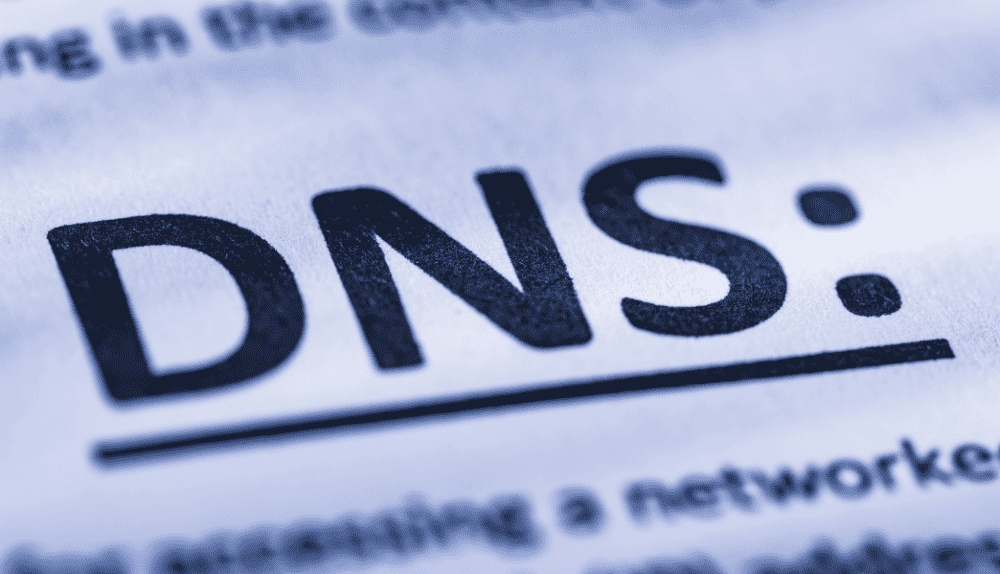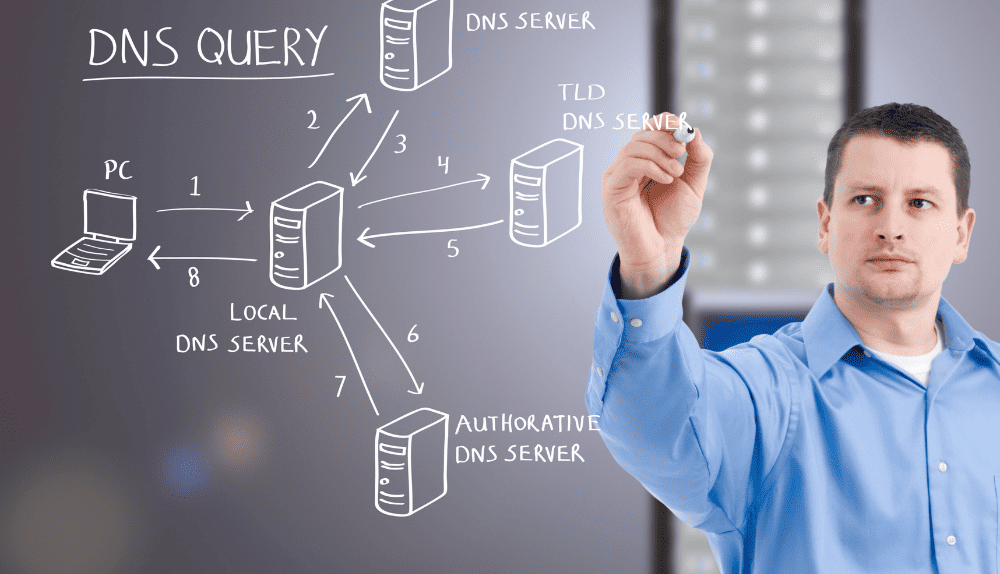- 11th Jul, 2023
- No Comments
What Are DNS Records and How Do They Work?

Have you ever wondered how the internet seamlessly connects users to websites with a simple click? Behind this seemingly magical process lies a crucial component called DNS records—the lesser-known aspect that is responsible for translating human-friendly domain names to the machine-readable IP addresses.
DNS records silently facilitate our online experiences, ensuring that when we type a website address into our browsers, it is directed to the correct server. Despite their essential role, DNS records often remain shrouded in mystery for many users, leaving them curious about the inner workings of this intricate system.
So, today, we will try to know the unknown.
We will find out what DNS records are and how they function.
Demystifying their complexities will help you gain a profound understanding of how they enable the smooth and efficient operation of the internet and empower users to optimize their own online presence.
So, let’s start right away!
What are DNS Records?
Domain Name System or DNS records are vital components of the internet infrastructure that facilitate the translation of human-readable domain names to machine-readable IP addresses.

In simple terms, they act as a directory for the internet, mapping domain names to the corresponding IP addresses of servers hosting websites and other online services.
Step-By-Step Working Mechanism of DNS Records
DNS records work in the following manner:
- When a user enters a domain name in their browser, a DNS resolver is responsible for initiating the DNS resolution process.
- The resolver queries the root name servers to determine the authoritative name servers for the specific top-level domain (TLD) of the entered domain name.
- The resolver then contacts the authoritative name servers and obtains the domain’s IP address.
- The authoritative name servers respond with the IP address, allowing the resolver to establish a connection to the appropriate server.
- Finally, the user’s browser can communicate directly with the server’s IP address to retrieve the website content.
Throughout this process, DNS records play a crucial role in providing the necessary information to resolve the IP address of the domain name.
Types of DNS Records
There are various DNS records, each serving a specific purpose in the DNS system. Here are some of the most important ones:
1. CNAME Record
A CNAME (Canonical Name) record allows you to create an alias or point a subdomain to another domain name. It’s useful when you want to associate multiple domains with one IP address.
2. SOA Record
The SOA (Start of Authority) record indicates the primary source of DNS information for a specific domain. It contains details such as the primary name server, the responsible person’s email address, serial number, refresh interval, and more.
TXT Record
TXT (Text) records store additional text-based information associated with a domain. They are often used for verification purposes, SPF or Sender Policy Framework configuration, or adding human-readable notes.
A Record
An A (Address) record is the most fundamental DNS record. It maps a domain to an IPv4 address, allowing users to reach a specific web server or other resources.
AAAA Record
Similar to the A record, the AAAA record maps are used to map the domain to an IPv6 address. It enables connectivity over IPv6 networks, which are becoming increasingly prevalent.
PTR Record
A PTR (Pointer) record performs the reverse of an A or AAAA record. It maps an IP address to a domain name and is used to reverse DNS lookups.
MX Record
MX (Mail Exchanger) records specify the mail servers responsible for accepting email messages for a domain. They are essential for proper email delivery and configuration.
NS Record
NS (Name Server) records define the authoritative name servers for a domain. They indicate which servers hold the domain’s DNS records.
Zone File
A zone file is not a specific DNS record type but rather a file that contains a domain’s DNS records. It includes various record types and their associated values.
SRV Record
SRV (Service) records define the location of specific services, such as VoIP (Voice over IP), within a domain. They provide details like the port number, protocol, and priority for accessing those services.
LOC Record
LOC (Location) records store geographic location information associated with a domain. They provide latitude, longitude, altitude, and other parameters, although they are not commonly used.
What are Name Servers?
Name servers play a critical role in the DNS system. They are servers responsible for handling DNS queries and storing a domain’s DNS records.
Each domain typically has multiple name servers, including primary and secondary ones, to ensure redundancy and availability.
Name servers ensure efficient and accurate resolution of domain names to their corresponding IP addresses.
DNS Record Configuration and Management
To configure and manage DNS records effectively, follow these steps:

- Access the DNS management suite
- Identify the domain for which you want to manage DNS records.
- Choose the type of DNS record you wish to create or modify (e.g., A, CNAME, MX).
- Enter the relevant information based on the record type, such as IP addresses, target domains, or mail server preferences.
- Save the changes and allow time for the DNS propagation process, during which the updated records will propagate across the DNS infrastructure.
- Regularly review and update DNS records as needed, ensuring accuracy and consistency.
- Consider implementing security measures such as DNSSEC (DNS Security Extensions) to protect against DNS-based attacks.
Best Practices for DNS Records
To ensure optimal DNS record management, follow these best practices:
1. Regularly Audit and Review DNS Records
It’s essential to periodically review and audit your DNS records to ensure their accuracy and relevance. Remove any outdated or unnecessary records that might be cluttering your DNS configuration.
2. Optimize TTL (Time to Live) Values
TTL determines the duration for which DNS resolvers and caching servers store the resolved DNS information. Setting an appropriate TTL value is crucial to balance caching efficiency and responsiveness.
A longer TTL reduces the load on DNS servers but might delay changes to DNS records. Conversely, a shorter TTL ensures quicker updates but increases the load on DNS servers. Consider your specific needs and adjust TTL values accordingly.
3. Implement DNS Redundancy
To ensure high availability and fault tolerance, it’s recommended to use multiple name servers for the domain. Designate a primary name server and configure secondary name servers with identical DNS records.
This redundancy helps distribute the load and ensures that DNS resolution continues even if one of the name servers becomes temporarily unavailable.
4. Monitor DNS Performance and Availability
Regularly keep a check on the performance of DNS infrastructure. It can be achieved through various monitoring tools and services.
Monitor DNS response times, track any errors or inconsistencies, and set up alerts to notify you of any issues. Timely detection and resolution of DNS problems can prevent disruptions to your online services.
5. Back up DNS Records and Maintain Documentation
Backing up your DNS records is crucial for disaster recovery and quick restoration in case of accidental changes or system failures.
Regularly back up your DNS configuration and maintain proper documentation of your records, including their purpose and any specific configuration details. This documentation will be invaluable when troubleshooting issues or migrating DNS settings.
How Many DNS Records Can a Domain Have?
Multiple DNS records can exist for the same domain. The maximum amount of DNS entries for a given domain is not hard and fast.
It’s up to the domain owner or administrator to decide how many DNS entries are necessary.
While there is technically no upper bound to the DNS record amount, some DNS administration interfaces, or DNS service providers may place such a cap.
DNS administration platforms and services might have varying restrictions.
If you want to know if there are any limits on the DNS record amount you may add to a domain, you should check with your DNS management provider’s documentation or support resources.
Can A DNS Record Have Two IP Addresses?
Two IP addresses cannot be included in one DNS entry. To connect a domain with an IP address (or many IP addresses for load balancing or redundancy), DNS records are employed. One IP address is associated with each DNS entry.
However, methods exist that allow you to accomplish the same result by linking many IP addresses to a single domain name.
Round-robin DNS is one such method. Multiple A records (address records) for the same domain are produced with round-robin DNS, each of which points to a distinct IP address.
When a client looks for the domain using DNS, it gets a bunch of different IP addresses. It balances the requests among all of the IPs connected to the system.
Can A DNS Record Point to Another Domain?
Yes, it can point to another domain using a Canonical Name or CNAME record.
A CNAME record allows you to create an alternative name or alias for a domain or subdomain. When a CNAME record is set up, it redirects DNS resolution from the current domain to the domain specified in the CNAME record.
Conclusion
DNS records play a vital role in the functioning of the internet by facilitating the translation of domain names to IP addresses.
They serve as the backbone of the Domain Name System, enabling users to access websites, send emails, and utilize various online services.
From basic A and CNAME records to more specialized types like MX, TXT, and SRV records, each record type serves a specific purpose in the DNS ecosystem.
To ensure optimal DNS record management, it’s important to follow best practices.
Regularly review and update your records, optimize TTL values for caching efficiency, implement DNS redundancy, monitor DNS performance, and maintain backups and documentation.
